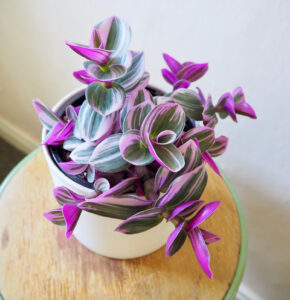The Silver Poplar Tree (Populus alba) is a deciduous tree known for its striking silver-gray foliage and rapid growth. It is native to Europe, Asia, and North Africa and is commonly planted for ornamental purposes, erosion control, and shade. Here’s a guide to caring for and maintaining a Silver Poplar Tree:
1. Light Requirements
- Full Sun: Silver poplar trees thrive in full sun, meaning they need at least 6 hours of direct sunlight each day to grow healthy and strong.
- Tolerates Partial Shade: While they grow best in full sun, they can also tolerate partial shade, though their growth may not be as vigorous.
2. Watering
- Consistent Moisture: These trees like consistently moist soil, especially when young, but they can tolerate short periods of drought once established.
- Well-Drained Soil: Ensure the soil is well-draining to prevent waterlogging, which can lead to root rot.
- Deep Watering: Water deeply, allowing the water to reach the tree’s roots, especially during dry spells.
3. Soil
- Adaptable to Many Soils: Silver poplars are not very fussy about soil type but prefer loamy, fertile, and moist soil. They can tolerate a range of soil pH from acidic to slightly alkaline.
- Avoid Salty Soil: Poplars are sensitive to salt, so avoid planting near salted roads or in areas with high salinity in the soil.
4. Temperature and Hardiness
- Hardiness Zones: The Silver Poplar is hardy in USDA Zones 3-8, meaning it can withstand temperatures as low as -30°F (-34°C).
- Cold Tolerance: It is generally cold-hardy, making it a good option for cooler climates, though it can also tolerate hot summer temperatures once established.
5. Pruning and Maintenance
- Minimal Pruning: Silver poplars are relatively low-maintenance when it comes to pruning. However, it’s a good idea to remove dead or damaged branches, especially after winter.
- Shape the Tree: If you want to maintain a specific shape or size, light pruning during the dormant season (winter) is recommended. Avoid excessive pruning, as poplars are sensitive to cuts and may suffer from disease if pruned too aggressively.
- Clear the Base: It’s also a good idea to remove any suckers or shoots that may grow at the base of the tree.
6. Growth and Size
- Fast Growth: Silver poplars are known for their rapid growth, often reaching heights of 40-60 feet (12-18 meters) with a spread of 30-50 feet (9-15 meters). They grow about 3-5 feet (1-1.5 meters) per year under ideal conditions.
- Shape: These trees typically have a pyramidal or oval shape, with a wide canopy and a dense branching structure.
7. Fertilizing
- Fertilization Needs: If your soil is poor, you can fertilize the tree in early spring with a balanced fertilizer. However, most Silver Poplar trees will grow well in average soil without the need for extra feeding.
- Over-fertilizing: Avoid over-fertilizing, as it can lead to excessive growth that may not be sustainable long-term and could increase the likelihood of disease.
8. Pests and Diseases
- Common Pests: Silver poplars are susceptible to pests like aphids, caterpillars, and poplar borers. Regularly inspect your tree for signs of pests.
- Diseases: They can suffer from fungal diseases like rusts and mildew. Proper spacing and good airflow around the tree will help prevent fungal issues.
- Preventing Problems: Regularly inspect the tree for signs of disease or pests, especially during the growing season. Apply appropriate treatments if necessary, but try to opt for organic methods when possible.
9. Invasive Nature
- Aggressive Root System: While it’s a fast-growing tree, the Silver Poplar has an aggressive root system that can invade underground utilities, foundations, and pathways. Plant it away from buildings, sidewalks, or sewer lines.
- Invasive in Some Areas: In some regions, Silver Poplars are considered invasive because of their fast growth and ability to spread easily by seed. Check with local authorities before planting.
10. Uses of Silver Poplar
- Ornamental: The Silver Poplar is widely used in landscaping for its attractive foliage and rapid growth. The silvery leaves and bark add visual interest.
- Windbreaks and Erosion Control: Due to its rapid growth and dense foliage, it’s commonly used in windbreaks or to control erosion along riverbanks and roadsides.
- Wood: The wood of the Silver Poplar is soft and light, commonly used in paper production and sometimes for furniture.
11. Toxicity
- Non-Toxic: The Silver Poplar is non-toxic to humans and animals, so it’s safe to plant around pets and children.
12. Reproduction and Propagation
- Seed and Cuttings: Silver Poplars reproduce naturally by seed, but they can also be propagated by hardwood cuttings. If you’re propagating by cuttings, ensure they are taken in late fall or early winter and placed in water or well-draining soil until rooted.
Conclusion
The Silver Poplar is a low-maintenance, fast-growing tree that provides a beautiful addition to any landscape. Its silvery foliage adds visual interest, and it can be planted for shade, windbreaks, or erosion control. Just be mindful of its aggressive roots and invasive potential in some areas, and you’ll have a thriving tree for years to come.


